The Medieval Cathedral City of Wells
England’s Smallest City, easily explored on foot, is a medieval city with Roman heritage dominated by a magnificent Gothic cathedral
The city of Wells in Somerset, England, with a population of 11,343 as per the 2011 census, bills itself as England’s smallest city. The City of London actually has a smaller population, but Wells is not part of a larger metropolitan area.
The history of Wells, located on the southern edge of Mendip Hills, dates back to Roman times. The earliest religious building on this site was a Roman mausoleum. King Ine of Wessex founded a minster church here around 700 AD. Although no written evidence of a town exists before the twelfth century, the orientation of the streets suggests the settlement was laid out on the alignment of this Anglo-Saxon church, not the Gothic church which dominates the landscape today. By the 14th century, the city had a thriving cloth-manufacturing industry. The textile industry declined in the eighteenth and nineteenth centuries, but Wells survived as a market town.
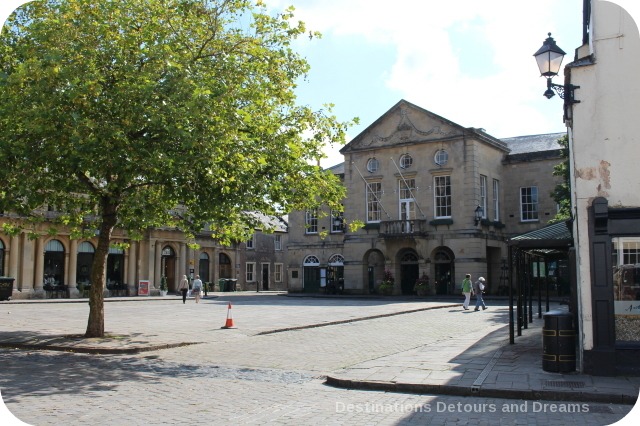
A good place to start your visit to Wells (or take a rest part way through) is at the Market Place, the square at the top of High Street. Start with a cup of coffee and a bite to eat at one of the cafes along the edge of the square. On a nice day, you can sit at a patio table outside. Markets are held in this square twice a week. From here, you can stroll the narrow streets with their eclectic mix of architecture and assorted shops. The famous Cathedral and Bishop’s Palace are behind the square.
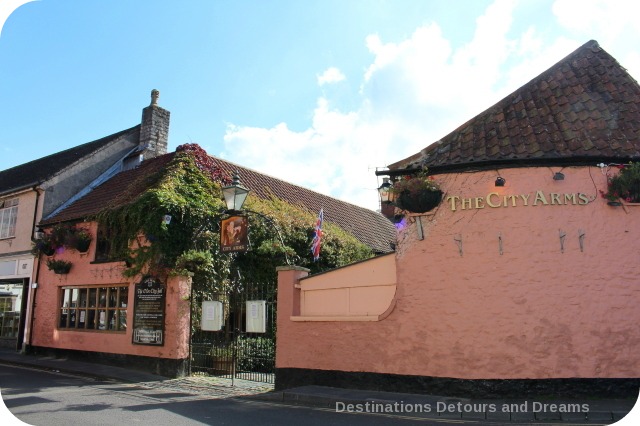
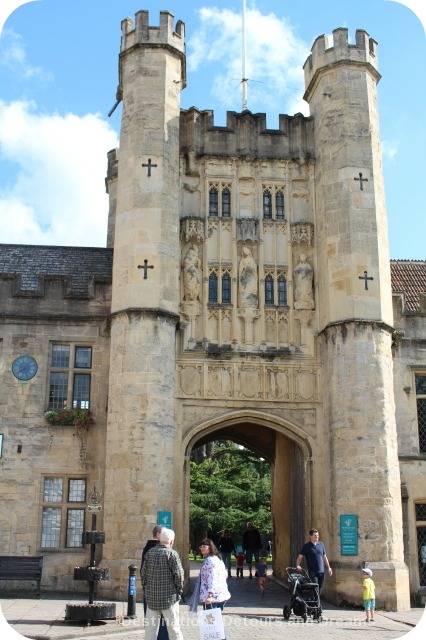
The Bishop’s Palace has been home to the Bishops of Bath and Wells for 800 years. The palace dates from the early-thirteenth century when Bishop Jocelin Trotman, the first bishop to hold the title of Bishop of Bath and Wells, received a crown licence to build a residence and deer park on land next to the Cathedral. The palace is open to visitors and there are 14 acres of gardens to wander through.
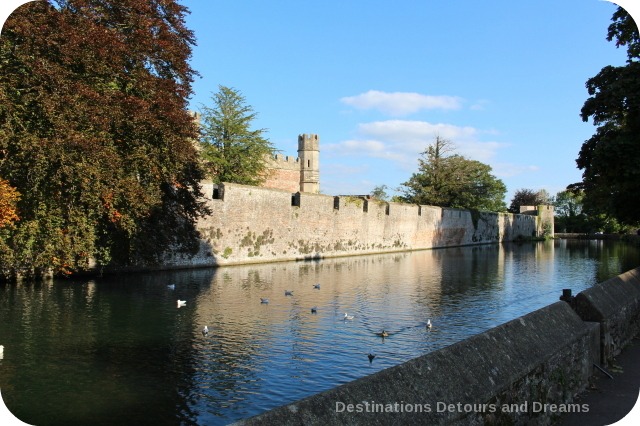
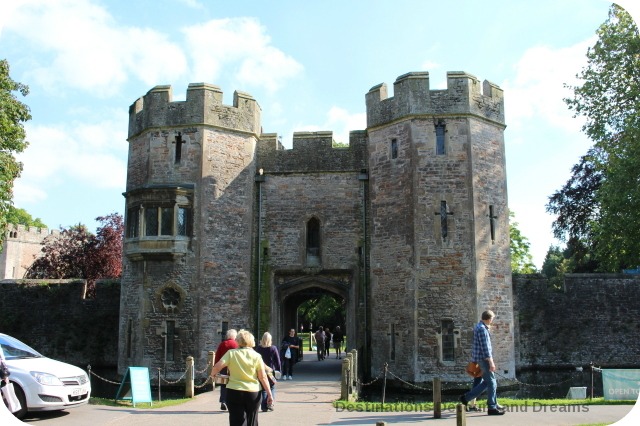
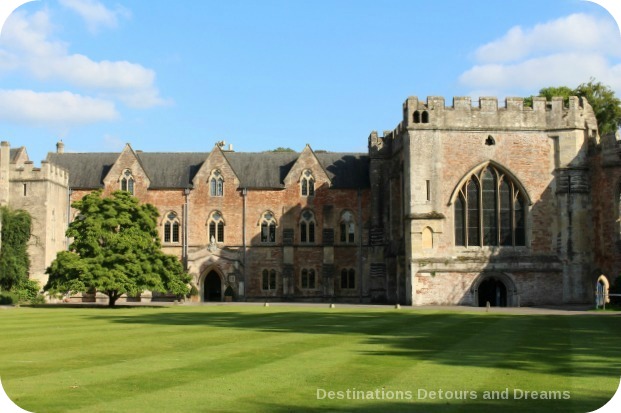
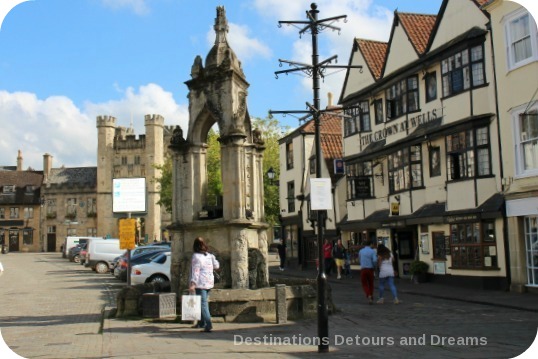
Wells takes its name from the springs (or wells) which rise in the gardens of Bishop’s Palace. In 1451, Bishop Bekynton granted the people of Wells a free water supply in perpetuity. providing the city with its first piped water supply. A grand conduit head was built in Market Place. From there the water ran through streets in open gutters. The present Gothic stone fountain replaced the medieval one in 1799. In 1803, a new water supply was granted by Bishop Richard Beadon, this time from the moat, which is fed by the springs.
In return for the water supply, Bishop Bekynton requested that the Master and Burgess visit the spot in the Cathedral where he would be interred once a year and pray for his soul. A civic occasion still takes place yearly.
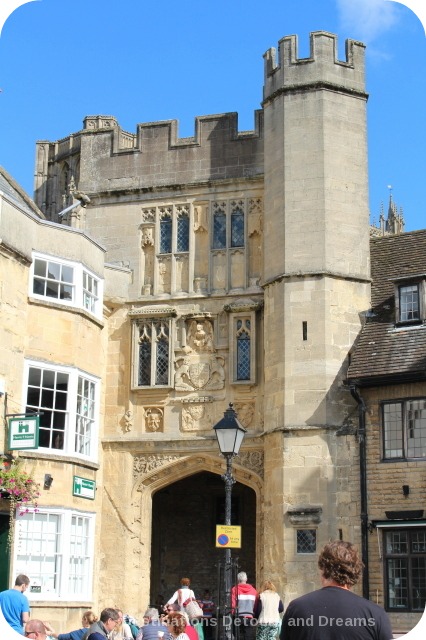
The main attraction in Wells is the Cathedral. Two medieval gateways to the Cathedral grounds remain. One is the Penniless Porch off Market Place. This is where the poor came to seek alms.
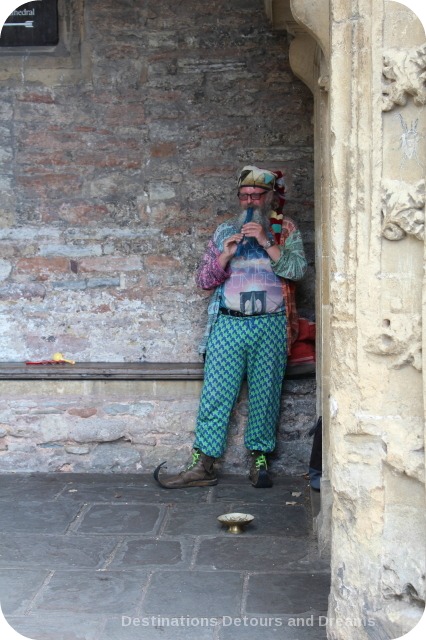
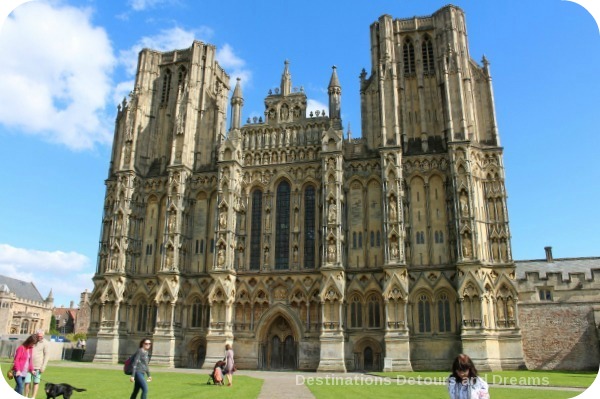
Wells Cathedral was built between 1175 and 1490, the first to be built entirely in Gothic style. The Cathedral is dedicated to St. Andrews the Apostle. I took a self-guided tour of the Cathedral and was glad I did. The interior is impressive. Information is available throughout the church about its history.
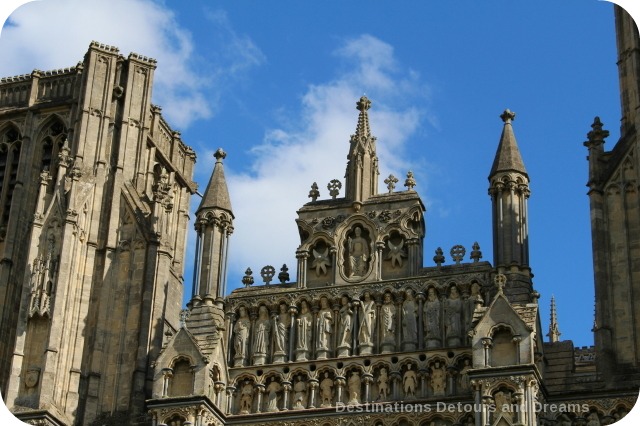
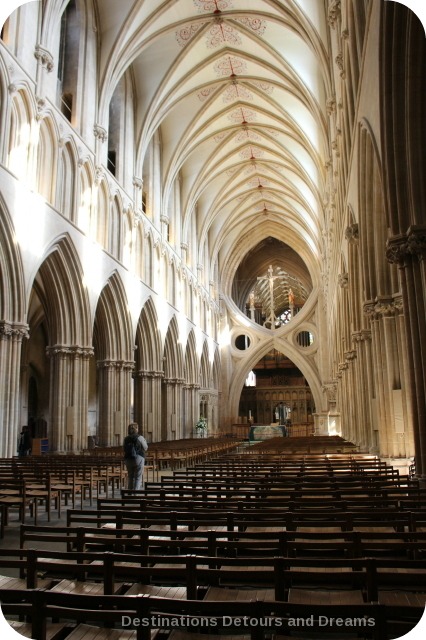
the inverted scissor arches were built from 1338 to 1348
to support central towers when the west side began to sink
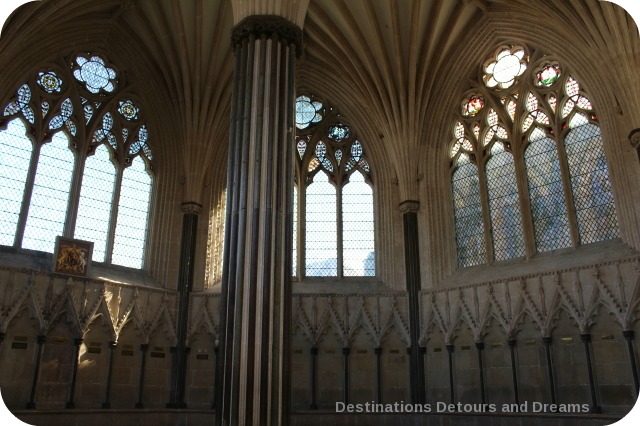
Canons met here daily to discuss church business.
Meetings today are only on formal occasions. Room is used for concerts and events.
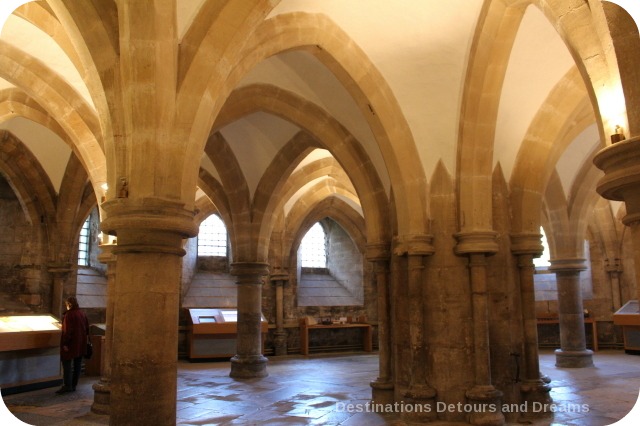
built 1242
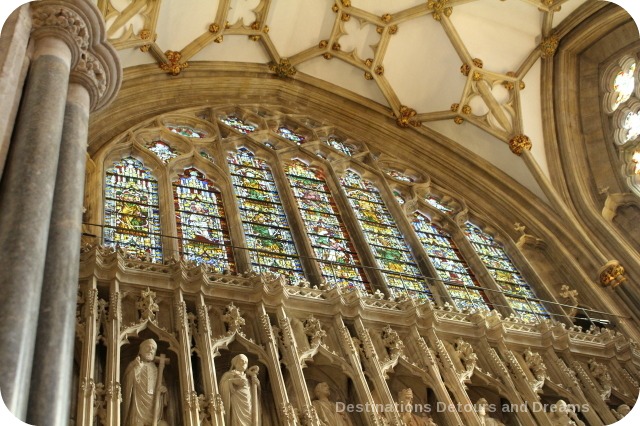
The stained-glass Jesse Window dates from 1340 and is still reasonably intact, narrowly escaping destruction in England’s Civil War. Although there have been sensitive repairs over the centuries and a major conservation project began in 2011 to install external, protective iso-thermal glazing, what we see today is basically how the medieval glaziers designed it. Other windows at the church were damaged during the Civil War. Many have been rebuilt.
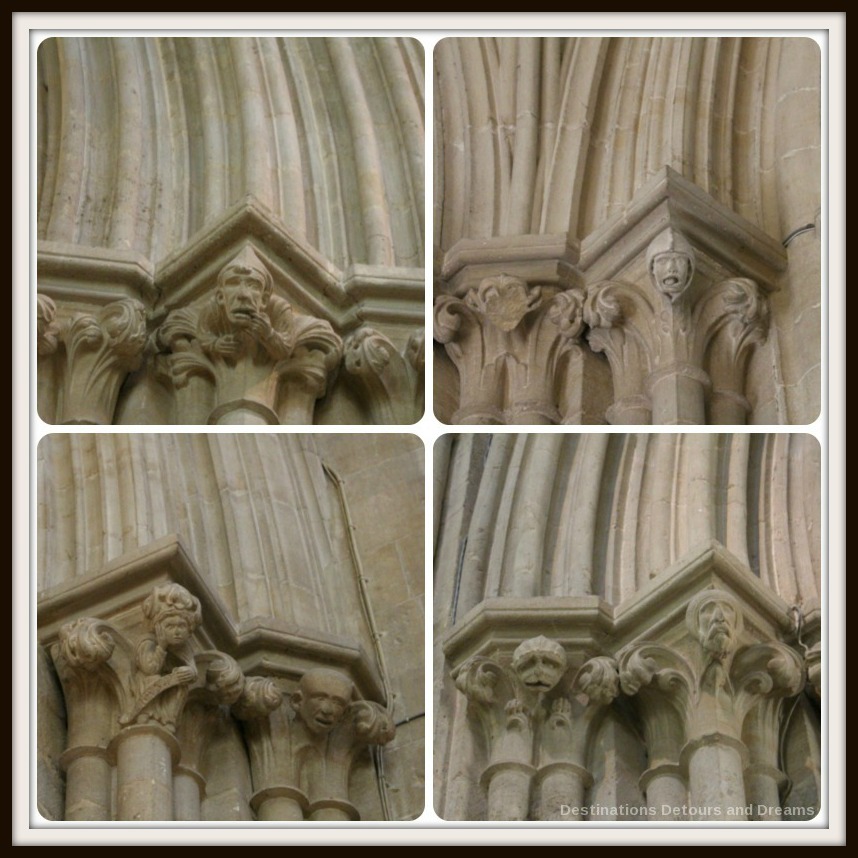
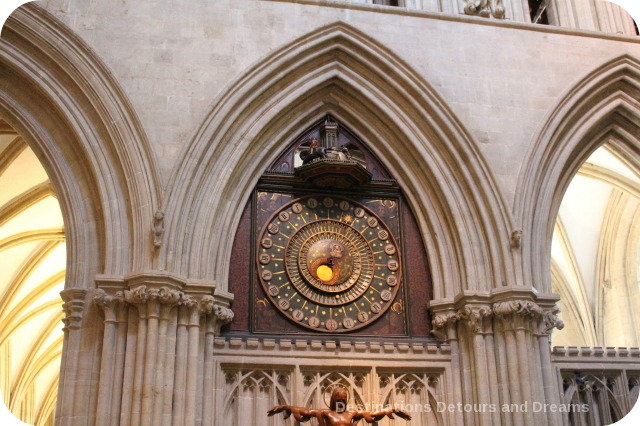
Complicated mechanical figures move and ring every quarter hour.
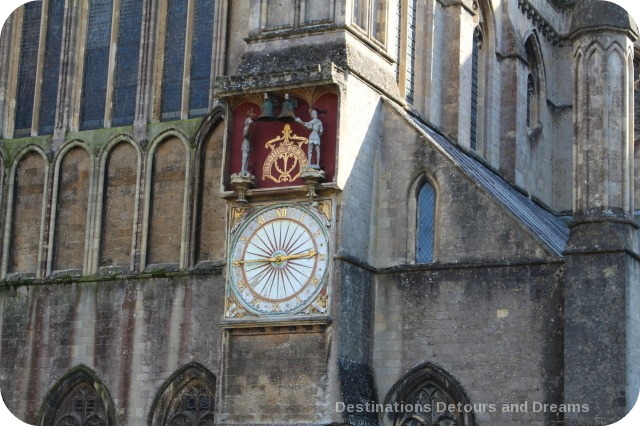
Wells Cathedral is associated with music. The first choir sang in 909 AD. Today’s Cathedral Choir is internationally recognized. The present church organ dates back to an instrument built in 1857. It was enlarged in 1910 and substantially rebuilt in 1973/74. it now consists of 67 stops. Just before I was about the leave the Cathedral, an organist began playing. I spent several minutes sitting in the nave enjoying the music before I left the Cathedral.
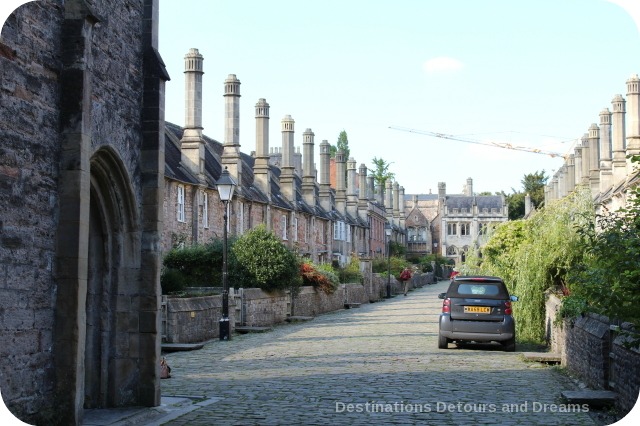
Wells Cathedral is open for the public to wander through daily. Guided tours are available at specific times Monday through Saturday. Non-flash photography for personal use is allowed with the purchase of a permit. (I received permission to publish my photos here.)
The Bishop’s Palace open times vary by season. Check the website for current hours and any closure dates. Guided tours area available at set times in the day. Entry into the grounds, where you’ll find a cafe with both indoor and outdoor seating is free. There is a charge for access to the palace and gardens.
Other spots of interest in Wells include the Church of St. Cuthbert’s, which dates to the 13th century and is sometimes mistaken by visitors for the Cathedral, and Wells and Mendip Museum, which tells the story of the Mendip landscape in Somerset.
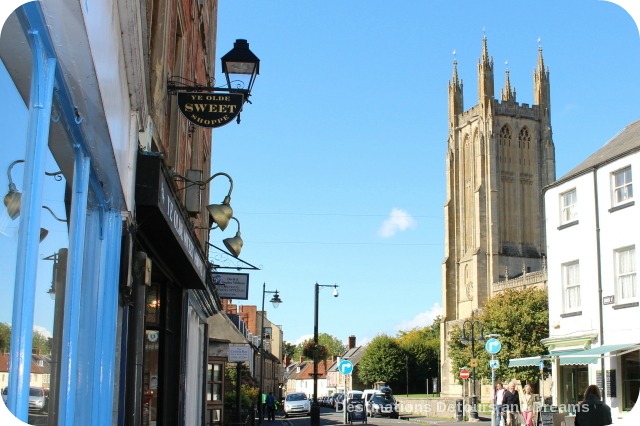
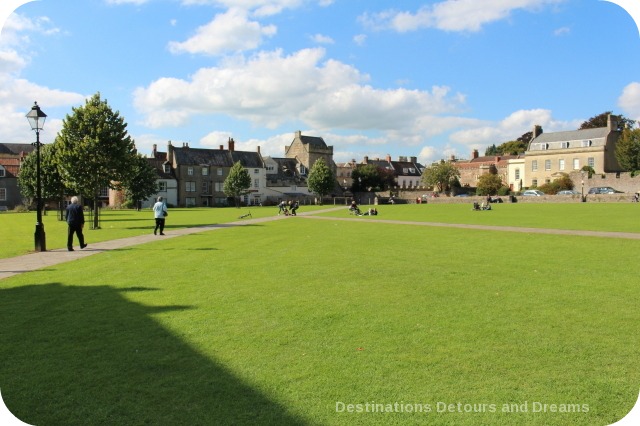
If you enjoyed this post, sign up for Destinations Detours and Dreams monthly e-newsletter. Get behind the scenes information and sneak peeks ahead in addition to a recap of the month’s posts.
PIN IT
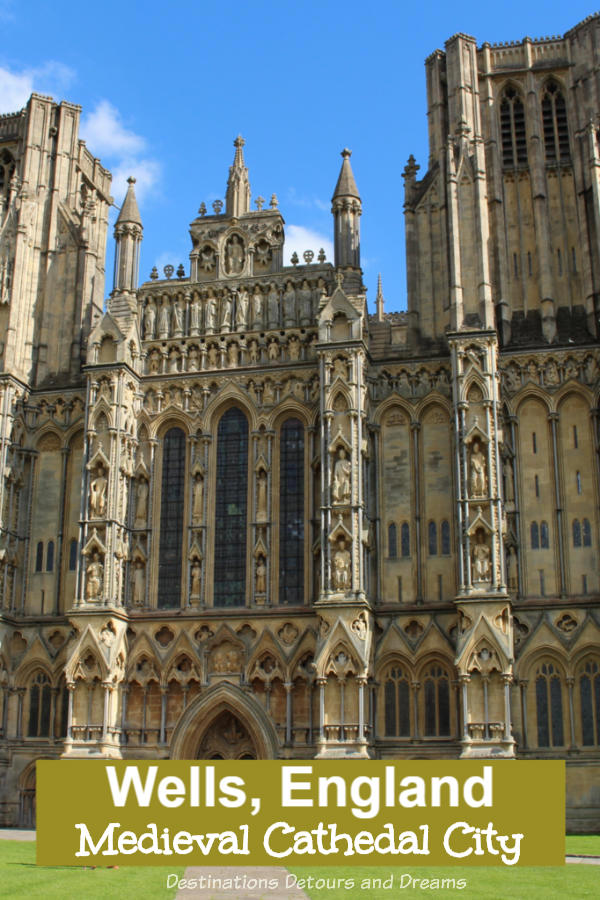

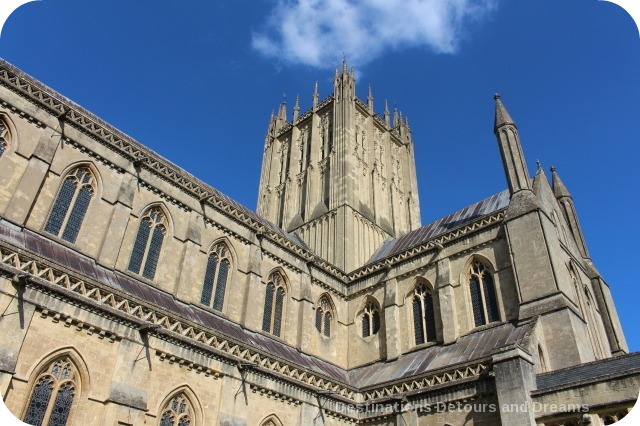
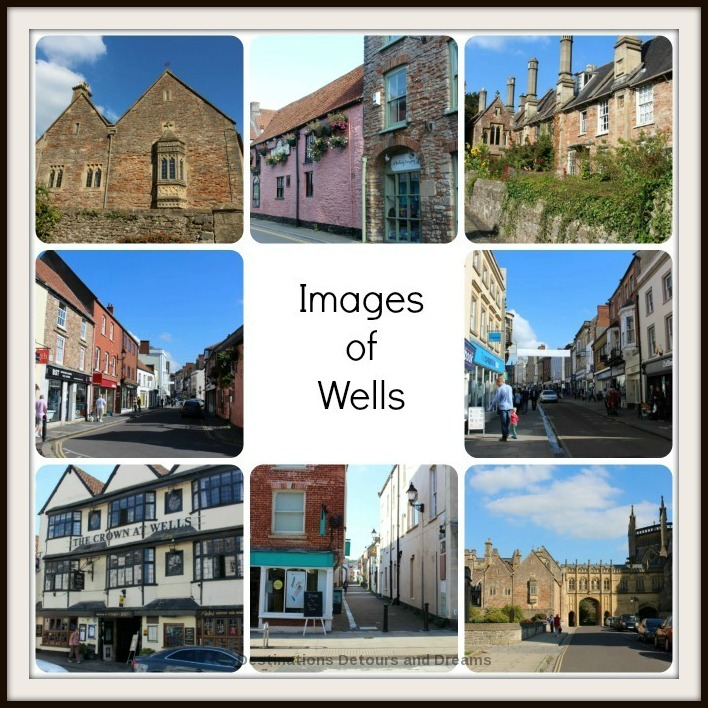
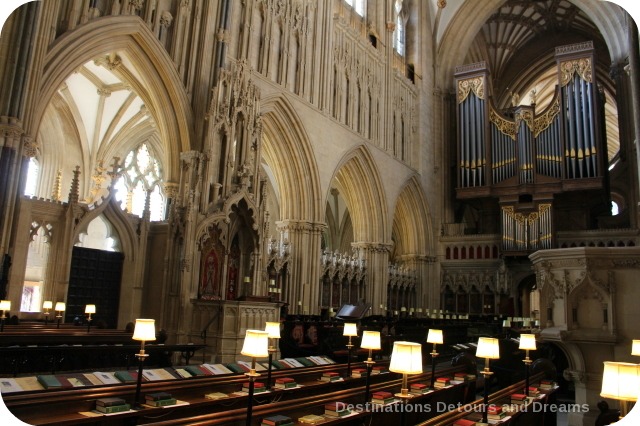
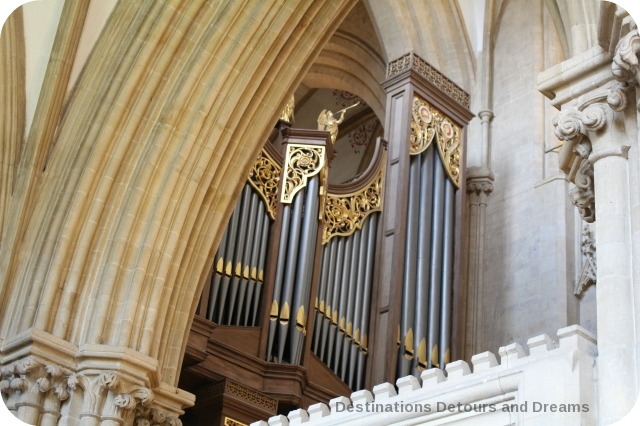
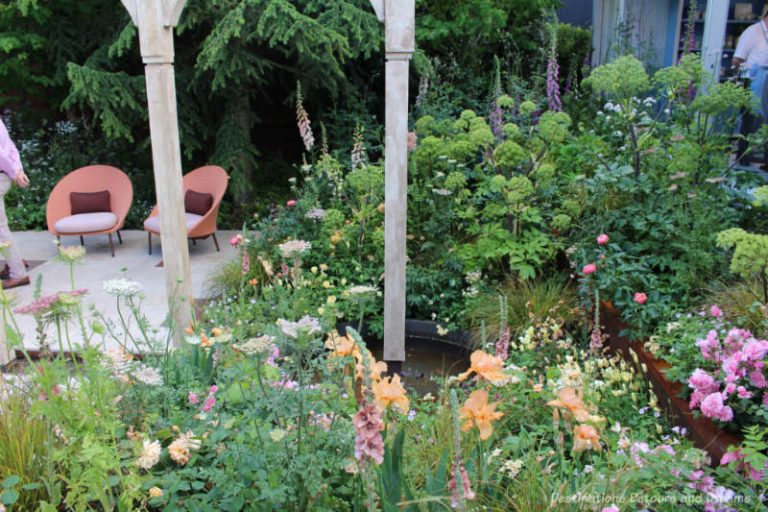

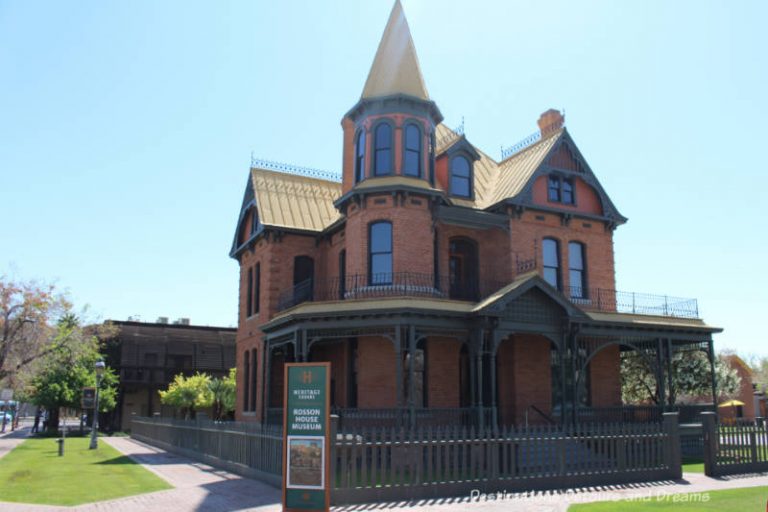
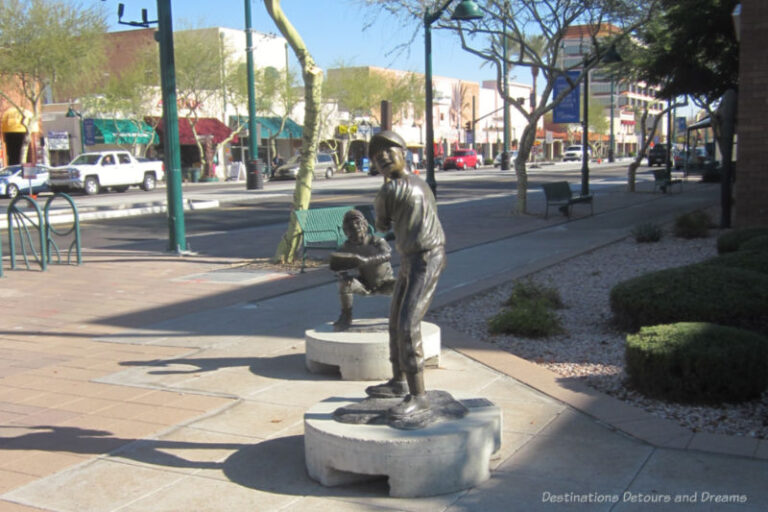
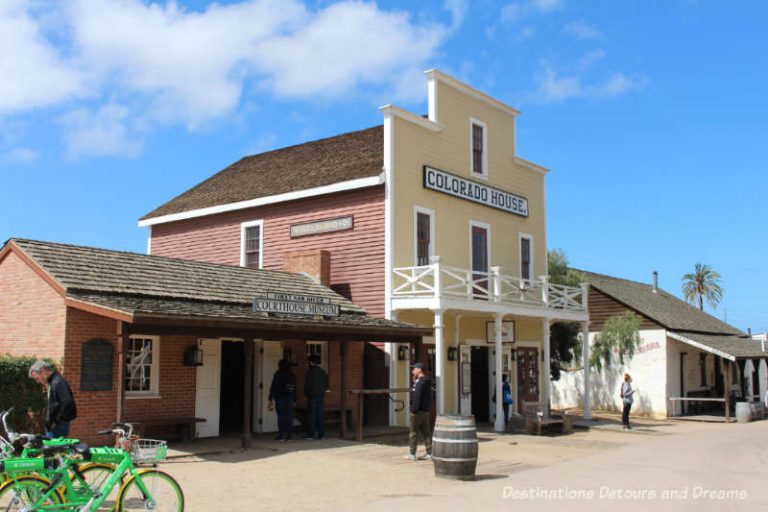
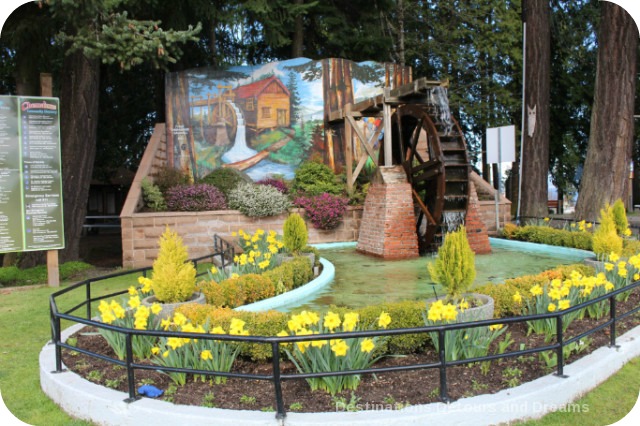
This is completely stunning. I’ve not heard of the Medieval Cathedral City of Wells, Donna, so thanks! The cathedral is jaw dropping beautiful! I can only imagine what it must have felt like in person.
Jacquie, Wells Cathedral is one of the most impressive churches I’ve visited.
As usual, your article, including the wonderful photos, covered all the details (and more) of what a tourist would like to know about the city of Wells about its history and architecture. Is it close to Bath? If so, how close?
Thanks Carol. Wells is about 20 minutes from Bath.
As always, you have great historical details and photos of Wells. We visited the beautiful cathedral many years ago when our children were young, so this both brought back great memories and added to them.
Thanks Shelley. Glad I could bring back some good memories.
I think Wells must be one of the few English cathedrals I haven’t visited. Those scissor arches are very unusual.
Karen, the scissor arches are quite impressive. They seem like a modern addition, but aren’t.
Thank you Donna for sharing The cathedral both inside and outside is stunning and you give a great description of the area that it makes me want to take a trip there.
Freda, stunning is a good word to use for the cathedral.
What an interesting history – with some small twisted tales inserted to make it more juicy! It reads like you really did your research well 😉 Do you have any idea why the house chimneys in Vicar’s Close are so tall?
Good question Juergen. I had to look it up. The original chimneys were extended in the 15th century. The history section on the Wells Cathedral website suggests a possible reason for this was that the Vicars were beginning to burn coal instead of wood and taller chimneys were needed to carry away the pungent smoke.
For England’s oldest city, Welles seems kind of big! Thanks for taking me along for a visit.
Carole, the population of Wells is about 12,000. It is a very walkable city.
Wonderful photos and text about the beautiful walled city of Welles, England.
Thanks.
Wells Cathedral and the Bishop’s Palace look like must sees when visiting this part of the world. Great photos! Anita
Thanks Anita. I am reluctant to ever use the words must or should. There are so many wonderful things to see everywhere one goes and each person’s taste is different, but Wells Cathedral is spectacular.
Fantastic pictures and commentary, Donna. I look forward to sharing with my friends! (And I’d like to be there right now!)
Thanks Rose Mary.
Donna, your photos are wesomeQ
Sorry. Somehow, my finger must have slipped and the comment was submitted before I finished. Your post has made me want to visit Wells the next time I am in the UK.
Doreen, Wells is worth a visit (and there are a lot of towns and cities around it also worth visiting).
Hi Donna, I love to visits old churches and cathedral s when I travel. This one looks exquisite. Your photos are great, but I’m certain in person it was even more grand. Awesome!
Susan this cathedral was indeed awesome and you’re right – so much better in person than in photos.